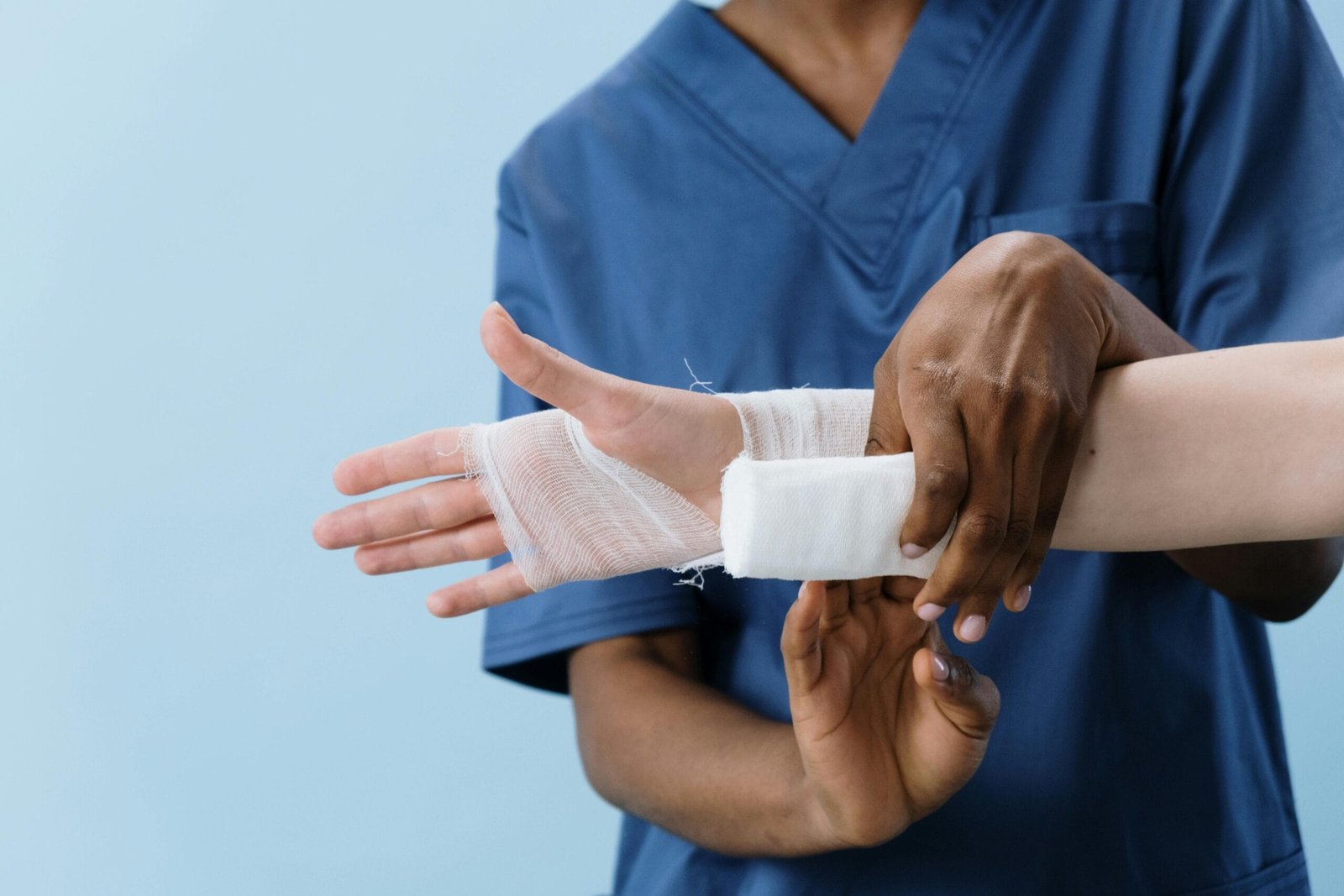
First Aid for Workplace Injuries: Essentials Everyone Should Know
Workplace injuries are an inevitable part of most industries. While some injuries are severe and require immediate professional help, others can be managed with proper first aid until medical professionals arrive. Knowing the right steps to take in case of a minor injury can prevent further complications and potentially save lives.
Why Workplace First Aid is Important
First aid is the initial help provided to injured employees or colleagues at the scene of an incident. It can prevent a minor injury from becoming worse and stabilize the injured person until professional medical treatment is available.
Key Reasons Why Workplace First Aid Matters:
- Reduces Severity of Injuries: Timely response minimizes the risk of complications.
- Prevents Fatalities: Immediate treatment can save lives during emergencies.
- Builds Confidence: Employees feel safer knowing first aid protocols are in place.
- Reduces Downtime: Quick response prevents prolonged absences from work due to injury.
Common Workplace Injuries & How to Handle Them
Understanding the most common injuries and their first aid treatment is vital. Below are some common injuries in the workplace and the steps you should take:
1. Cuts and Bleeding
What to Do:
- Stop the Bleeding: Use a clean cloth or sterile dressing to apply firm pressure on the wound.
- Elevate the Injury: Raise the injured area above the heart if possible to slow blood flow.
- Clean the Wound: Once bleeding is under control, clean the area with clean water to prevent infection.
- Apply a Bandage: Cover the wound with a sterile bandage to protect it from contaminants.
2. Sprains and Strains
Sprains occur when ligaments are stretched or torn, while strains affect muscles.
What to Do:
- Rest: Avoid using the injured area.
- Ice: Apply ice packs for 20 minutes every 2-3 hours during the first 24 hours to reduce swelling.
- Compression: Use an elastic bandage to control swelling, but not too tight.
- Elevation: Raise the injured area above heart level to minimize swelling.
3. Burns
Burns are common in environments with heat, chemicals, or fire.
Types of Burns:
- First-Degree Burn: Red, painful, and affects the outer layer of skin.
- Second-Degree Burn: Blisters and swelling; extends into the second layer of skin.
- Third-Degree Burn: Severe; skin appears white, charred, or leathery.
What to Do:
- For First-Degree Burns: Cool the area with running water for at least 10 minutes.
- For Second-Degree Burns: Immerse the area in cool water and cover with a clean, non-stick dressing.
- For Third-Degree Burns: Do NOT remove clothing stuck to the burn. Cover the area with a clean, dry cloth and seek professional help immediately.
4. Falls and Fractures
Falls from height or trips can lead to broken bones or sprains.
What to Do:
- Do Not Move the Injured Person: Unless they are in immediate danger, leave them in place.
- Check for Consciousness and Breathing: If the injured person is unconscious, initiate CPR if trained.
- Apply Immobilization: Use splints if possible to limit movement, but only if trained to do so.
- Call for Help: Seek professional medical attention immediately.
First Aid Kit: The Must-Have at Every Workplace
A well-stocked first aid kit can make a significant difference in handling injuries. Your workplace first aid kit should include:
- Adhesive bandages and sterile gauze
- Antiseptic wipes
- Sterile dressings
- Ice packs
- Elastic bandages for sprains
- Burn cream
- CPR face shield or mask
- Scissors and tweezers
- Gloves
Tip: Regularly check and replenish the first aid kit to ensure everything is available and in good condition.
When to Call for Professional Medical Help
While first aid can treat minor injuries, certain circumstances require professional medical attention. These include:
- Severe bleeding that doesn’t stop with pressure.
- Loss of consciousness or inability to wake the injured person.
- Broken bones or severe pain.
- Signs of a head, neck, or back injury.
Remember: Always err on the side of caution. If you are uncertain about an injury, call emergency medical services.
Preventive Measures to Minimize Workplace Injuries
Prevention is always better than treatment. Employers and employees can adopt several measures to create a safer workplace:
- Proper Training: Ensure all employees receive first aid training and safety instruction.
- Workplace Safety Equipment: Ensure employees have access to protective gear such as gloves, helmets, and boots.
- Ergonomics: Promote ergonomic workspaces to prevent repetitive strain injuries.
- Maintain Clear Work Areas: Avoid slips, trips, and falls by keeping pathways clear.
- Regular Safety Audits: Inspect the work environment for hazards and rectify them promptly.
Conclusion: Staying Prepared & Informed
Workplace injuries are preventable, but knowing how to act in emergencies can save lives. Proper first aid can stabilize injuries, reduce risks, and ensure the safety of employees. Employers must prioritize employee safety by promoting regular first aid training and having a well-stocked first aid kit on hand.
Stay prepared. Stay safe. Learn first aid essentials today.
Dont Hesitate To Contact Us
We’re here to help! If you have any questions, feedback, or need assistance, please feel free to reach out.
Trusted Resources for More Information
American Red Cross – Workplace First Aid & Safety:
https://www.redcross.org
Provides comprehensive first aid courses, guides, and tips for handling injuries.
National Safety Council (NSC):
https://www.nsc.org
Offers resources on workplace safety, first aid training, and injury prevention strategies.
World Health Organization (WHO) – Occupational Health & Safety:
https://www.who.int
Trusted global authority for safety guidelines, injury statistics, and prevention tips in workplaces.
Occupational Safety and Health Administration (OSHA):
https://www.osha.gov
U.S.-based resource providing workplace safety guidelines, first aid protocols, and emergency preparedness.
St. John Ambulance – First Aid Information:
https://www.sja.org.uk
A well-recognized organization offering first aid training and safety resources.
CDC – Workplace Safety Resources (Centers for Disease Control & Prevention):
https://www.cdc.gov
Offers research-based insights into workplace injuries and prevention strategies.


